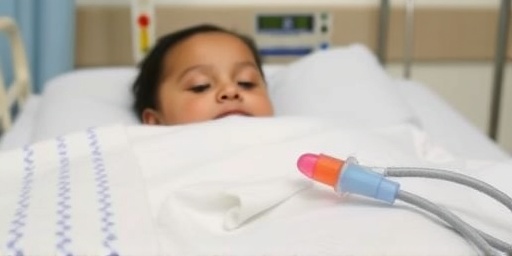New York and Massachusetts hospitals are sounding the alarm as a massive surge in Respiratory Syncytial Virus (RSV) cases among infants has led to overflowing pediatric wards, bed shortages, and the activation of emergency triage protocols. With flu season hitting simultaneously, medical facilities across the Northeast US are struggling to cope, forcing some to transfer patients or delay non-emergency care.
- New York City Pediatric Units Hit Breaking Point with RSV Influx
- Boston Hospitals Activate Crisis Protocols Amid RSV and Flu Double Threat
- CDC Steps In with Urgent Vaccination Guidance for High-Risk Infants
- Healthcare Workers Stretch Thin as Northeast US Faces Dual Respiratory Epidemics
- Experts Forecast Extended RSV Wave and Outline Prevention Roadmap
According to preliminary data from the Centers for Disease Control and Prevention (CDC), RSV hospitalizations in the region have skyrocketed by over 250% compared to last year at this time, with New York reporting more than 1,200 pediatric admissions in the past two weeks alone. Boston-area hospitals, including Boston Children’s Hospital, have declared ‘code capacity’ status, a rare measure signaling extreme strain on resources.
New York City Pediatric Units Hit Breaking Point with RSV Influx
In the heart of the Northeast US, New York City’s pediatric hospitals are ground zero for the RSV outbreak. NYU Langone Health and Mount Sinai Kravis Children’s Hospital have reported a deluge of tiny patients gasping for breath, many under six months old. “We’ve never seen numbers like this,” said Dr. Sarah Jenkins, chief of pediatric pulmonology at NYU Langone. “Infants are arriving by ambulance hourly, and we’re triaging in hallways because beds are nonexistent.”
State health officials confirm that pediatric hospitalizations related to RSV have tripled in the last month, overwhelming neonatal intensive care units (NICUs). A stark example: Cohen Children’s Medical Center on Long Island turned away ambulances last weekend, redirecting critical cases to adult facilities ill-equipped for infants. This crisis coincides with flu season, amplifying the chaos as dual infections ravage young immune systems.
Local data paints a grim picture:
- RSV cases: Up 280% year-over-year in New York state.
- Hospital occupancy: Pediatric wards at 120% capacity statewide.
- High-risk group: Premature infants and those with congenital heart disease most affected.
Parents like Maria Gonzalez from Queens shared harrowing experiences: “My four-month-old was wheezing so badly we waited six hours in the ER. They put her on oxygen in a makeshift tent. It’s terrifying.” Such stories underscore the human toll of this pediatric hospitalization surge.
Boston Hospitals Activate Crisis Protocols Amid RSV and Flu Double Threat
Across the border in Massachusetts, the situation mirrors New York’s desperation. Boston Children’s Hospital, one of the nation’s top pediatric centers, has canceled elective surgeries and expanded into conference rooms for patient overflow. “Flu season has collided with RSV peak, creating a perfect storm,” explained Dr. Mark Schuster, the hospital’s president. “We’re seeing more severe cases, with some kids requiring ventilators.”
Massachusetts Department of Public Health reports over 850 RSV-related pediatric hospitalizations since early November, a 220% increase from 2023. Floating Hospital for Children at Tufts Medical Center has implemented strict visitor bans and virtual waiting rooms to manage crowds. The Northeast US flu season, which typically ramps up in December, has arrived early, with positive flu tests doubling in tandem with RSV detections.
Key Statistics from Massachusetts RSV Outbreak
- Infant admissions: 65% of total RSV cases involve babies under 1 year.
- Co-infections: 30% of patients test positive for both RSV and influenza.
- ICU usage: Pediatric ICUs operating at 140% capacity.
Experts attribute the spike to low immunity post-COVID lockdowns and waning maternal antibodies in newborns. “This isn’t just a bad year; it’s a warning sign,” noted epidemiologist Dr. Lena Patel from Harvard Medical School.
CDC Steps In with Urgent Vaccination Guidance for High-Risk Infants
The CDC has issued an emergency alert, urging immediate vaccinations for high-risk groups amid the Northeast US RSV and flu season crisis. “Pediatric hospitalizations are preventable with tools we have now,” stated CDC Director Dr. Rochelle Walensky in a virtual briefing. The agency recommends nirsevimab, a monoclonal antibody shot for infants, and RSV vaccines like Arexvy for pregnant women to pass immunity to newborns.
Key CDC directives include:
- Prioritize nirsevimab for babies entering their first RSV season.
- Ensure all eligible adults over 60 get updated flu shots alongside RSV boosters.
- High-dose flu vaccines for children with chronic conditions.
Supply chains are strained, with pharmacies reporting shortages of pediatric RSV immunizations. The CDC is coordinating with manufacturers like Sanofi and AstraZeneca to ramp up production. “Vaccination rates must rise 50% in the next month to bend this curve,” Walensky emphasized.
In parallel, the agency tracks wastewater surveillance showing RSV viral loads at record highs in New York and Boston sewers, predicting the wave could last into spring.
Healthcare Workers Stretch Thin as Northeast US Faces Dual Respiratory Epidemics
Frontline staff in Northeast US hospitals are burning out under the weight of RSV pediatric hospitalizations and flu season demands. Nurse ratios have hit 1:10 in some units, far above safe standards. “We’re rationing IV fluids and monitors,” admitted a anonymous nurse at Mass General for Children. Unions report a 15% spike in sick calls due to personal illnesses or exhaustion.
The overlap of RSV and flu has led to novel treatment challenges. Doctors are using high-flow nasal cannulas around the clock and experimenting with bundled care protocols to free up beds faster. Regional collaborations, like the Northeast Pediatric Critical Care Network, are sharing ventilators and staff across state lines.
Economically, the strain is immense: Estimated costs for RSV hospitalizations exceed $500 million in the region this season, per preliminary insurer data. Insurers like UnitedHealthcare are fast-tracking approvals for home oxygen setups to alleviate inpatient pressure.
Parent and Community Responses to the Crisis
Community support groups have mushroomed on social media, with #RSVSurgeNortheast trending. Parents exchange tips on home remedies like humidifiers and saline drops, while advocating for policy changes. New York Governor Kathy Hochul announced $10 million in emergency funding for pediatric wards, including mobile testing units.
In Massachusetts, lawmakers are pushing for expanded telehealth reimbursements to keep mild cases out of ERs. Public health campaigns blast radio and billboards: “Mask up, vax up—protect our littlest fighters.”
Experts Forecast Extended RSV Wave and Outline Prevention Roadmap
Looking ahead, infectious disease specialists warn the RSV surge in the Northeast US could persist through March, exacerbated by flu season and potential COVID rebounds. “Climate factors like mild fall weather delayed indoor crowding, but now it’s all converging,” said Dr. Ian Lipkin, Columbia University virologist.
Prevention strategies gaining traction include:
- Hand hygiene drives: Hospitals distributing sanitizer stations in daycares.
- Ventilation upgrades: HEPA filters in pediatric clinics.
- Targeted screening: Rapid RSV tests at pediatrician visits.
- School policies: Staggered schedules to reduce transmission.
The CDC anticipates vaccine uptake will be pivotal. With new formulations expected by mid-winter, officials project a 30-40% drop in severe cases if coverage hits 70%. Hospitals are retrofitting spaces for surge capacity, including pop-up wards in parking garages—a sight reminiscent of pandemic peaks.
For families, the message is clear: Monitor for fever, cough, and rapid breathing in infants, and seek care early. As one pediatrician put it, “This flu season-RSV combo is rewriting our playbooks, but collective action can turn the tide.” Regional health departments promise weekly dashboards to track progress, offering hope amid the overload.
In the coming weeks, federal aid packages may bolster stockpiles, while research into universal RSV vaccines accelerates. The Northeast US stands at a crossroads, where vigilance today could safeguard tomorrows’ health.









